Art World
India Just Unveiled the World’s Tallest Statue, and It’s Twice as Big as the Statue of Liberty
Called the Statue of Unity, the 597-foot-tall bronze depicts India's first deputy prime minister, Sardar Vallabhbhai Patel.

Called the Statue of Unity, the 597-foot-tall bronze depicts India's first deputy prime minister, Sardar Vallabhbhai Patel.

Sarah Cascone

Narendra Modi, India’s prime minister, unveiled the world’s tallest statue on Wednesday as military aircraft flew overhead and released flower petals and colored balloons in the shape of the Indian flag. The 597-foot-tall bronze sculpture, called the Statue of Unity, dwarfs the previous title holder, the 420-foot Spring Temple Buddha in China, and is roughly twice as big as New York City’s Statue of Liberty.
The massive monument depicts the country’s first deputy prime minister, Sardar Vallabhbhai Patel (1875–1950), and has been erected in his home state of Gujarat. Patel, who would have turned 143 yesterday, helped unite the modern state of India following Partition in 1947, earning him the nickname the “Iron Man of India.”
“This statue is an answer to all those who question India’s power and might,” said Modi during his remarks, calling the massive artwork “a symbol of India’s integrity and resolve,” and noting that “Patel converted India’s diversity into its biggest strength.”
The piece cost 29.9 billion rupees ($430 million) and required some 2,000 workers to erect. Half the bill was footed by the Gujarat government, and the rest by the federal government or donations. (Controversially, the bronze cladding for the work was produced in China even as the government is promoting a “Made in India” campaign.)
Today is a day that will be remembered in the history of India.
No Indian will ever forget this day: PM @narendramodi pic.twitter.com/2cAbUyZrq8
— PMO India (@PMOIndia) October 31, 2018
The work of Indian sculptor Ram V. Sutar, the project has been in the works since 2010, when it was commissioned by Modi, then chief minister of his home state of Gujarat. The construction process took nearly three years, and required 7,416,080 cubic feet of cement, 25,000 tons of steel, and 1,700 tons of bronze.
Sutar, who will turn 94 in February, claims to have created more than 200 monumental sculptures over the course of his 60-year career, beginning with the 45-foot-tall Chambal monument, carved from a single rock in Madhya Pradesh. To sculpt Patel, Sutar referenced over 2,000 photographs. According to the artist’s website, building the world’s tallest sculpture is his “long-cherished dream.”

Ram V. Sutar working on the Statue of Unity. Photo courtesy of Ram V. Sutar.
Some 150 countries have all been gifted copies of Sutar’s 1969 bust of Mahatma Gandhi, created for the centenary celebrations of the leader’s birth. The original is prominently housed at India’s Parliament. The artist estimates he has made over 350 statues of Gandhi over the course of his career.
“Governments come and go but their love for statues remains,” Sutar told the Times of India. “I can’t even recall how many governments I have worked for to provide the sculptures of their leaders. But I do remember the story behind each sculpture I have made and why they are unique in their own way.”
The hope is that the new statue will become a major tourist attraction, although it’s home on the Narmada River near the Sardar Sarovar Dam—also named for Patel—is quite remote. Getting to Sadhu Bet, as the spot has been christened, will be a challenge as the nearest town, Kevadia, isn’t accessible by plane. And once you get there, there are no regulated taxis or public transportation to bring tourists to the statue, which could lead to tourists paying exorbitant fees to ride in private vehicles.
It will cost 350 rupees ($4.75) to take an elevator to the statue’s viewing galleries and museum, perched almost 500 feet above the ground. (The official website includes a bus ticket option but offers no details about from where it departs.) Officials are predicting 15,000 daily visitors, and the monument complex includes a 52-room hotel, shopping center, and designated selfie spot in what’s been dubbed the Valley of Flowers.
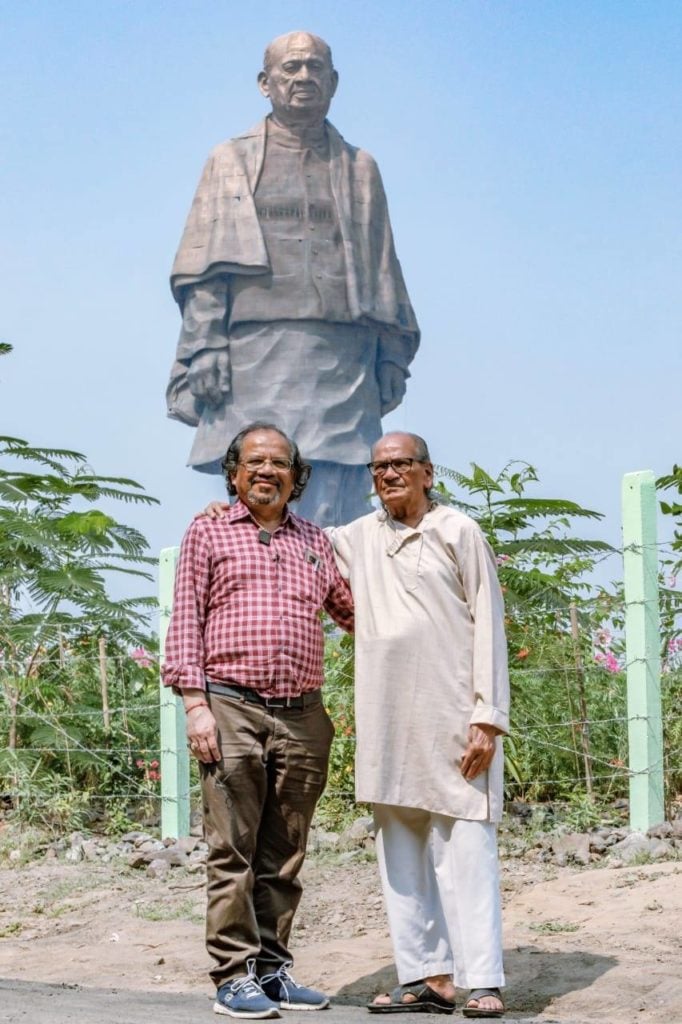
Ram V. Sutar and his son, fellow sculptor Anil Ram Sutar, with the Statue of Unity. Photo courtesy of Ram V. Sutar via Facebook.
But not everyone is welcoming the monument. Some in the local community oppose the piece, with local news outlets reporting that thousands of police officers are currently patrolling the area as protests have turned violent. Some farmers and tribal activists are calling for compensation for land seized by the government for the memorial and other civic projects; a number of protesters were reportedly detained this week.
“Instead of spending money on a giant statue, the government should have used it for farmers in the district,” Vijendra Tadvi, a local farmer, told the BBC.
Despite the Statue of Unity’s title, the artwork has also been seen by some as a calculated political move by Modi’s Bharatiya Janata Party. The right-wing party, founded in 1951, has been accused by some of attempting to appropriate Patel’s legacy even though he was a member of the BJP’s rival, the Indian National Congress party.
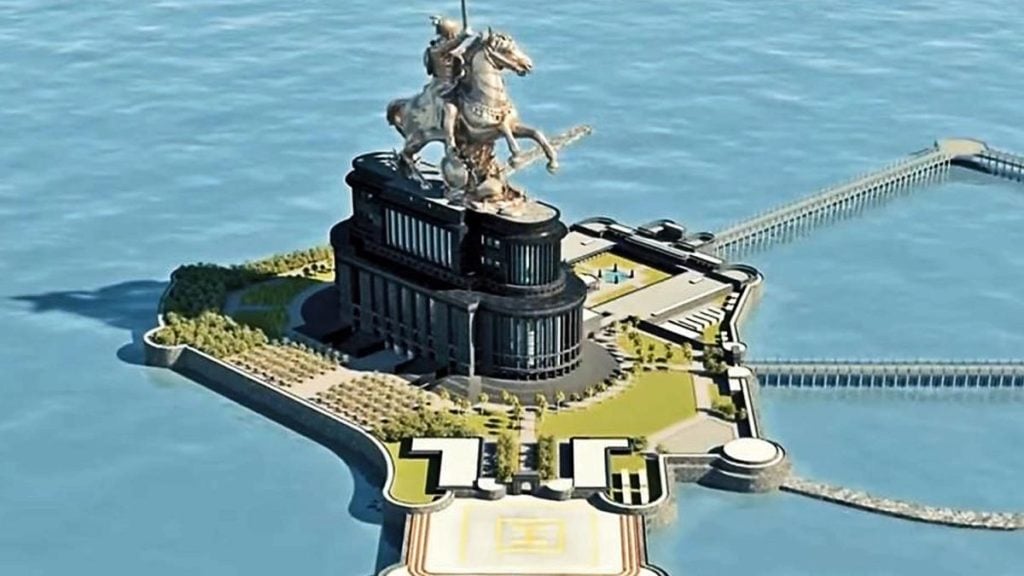
A rendering of the planned Chhatrapati Shivaji Maharaj Memorial, which stands to become the tallest statue in the world at 695 feet. Image courtesy of the Chhatrapati Shivaji Maharaj Memorial.
Controversies aside, it’s worth noting that the Statue of Unity may not be the world’s largest for long. Just off the coast of Mumbai, in the Arabian Sea, the Chhatrapati Shivaji Maharaj Memorial is slated to reach a height of 695 feet when it is completed in 2021. Chhatrapati Shivaji, a Hindu warrior king renowned for fighting Muslims who died in 1680, will be depicted on horseback.
That work, too, is politically fraught, with Mohan Guruswamy, president of Center For Policy Alternatives, a public policy organization, telling TIME that the statue serves as “a symbol of Hindu-Muslim conflict.” The London Times also reports that there are concerns that the construction, pegged at a cost of upwards of $500 million, could irreparably harm the local marine ecosystem.
See more photos of the Statue of Unity below.
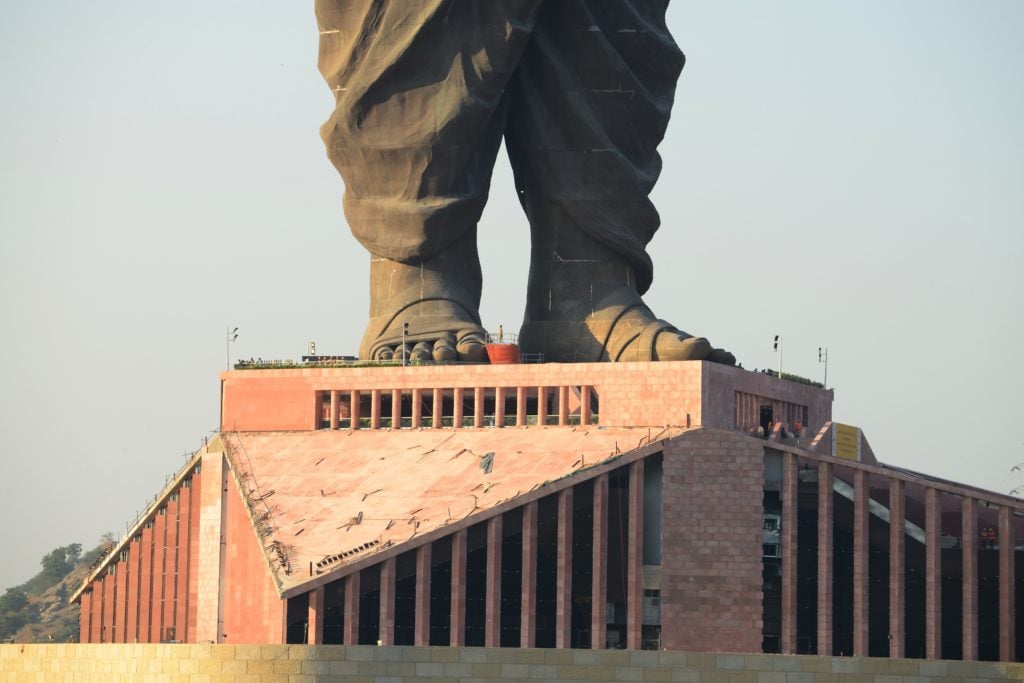
Indian construction workers are seen at the plinth structure for the Statue Of Unity, the world’s tallest statue, dedicated to Indian independence leader Sardar Vallabhbhai Patel. Photo by Sam Panthaky/AFP/Getty Images.
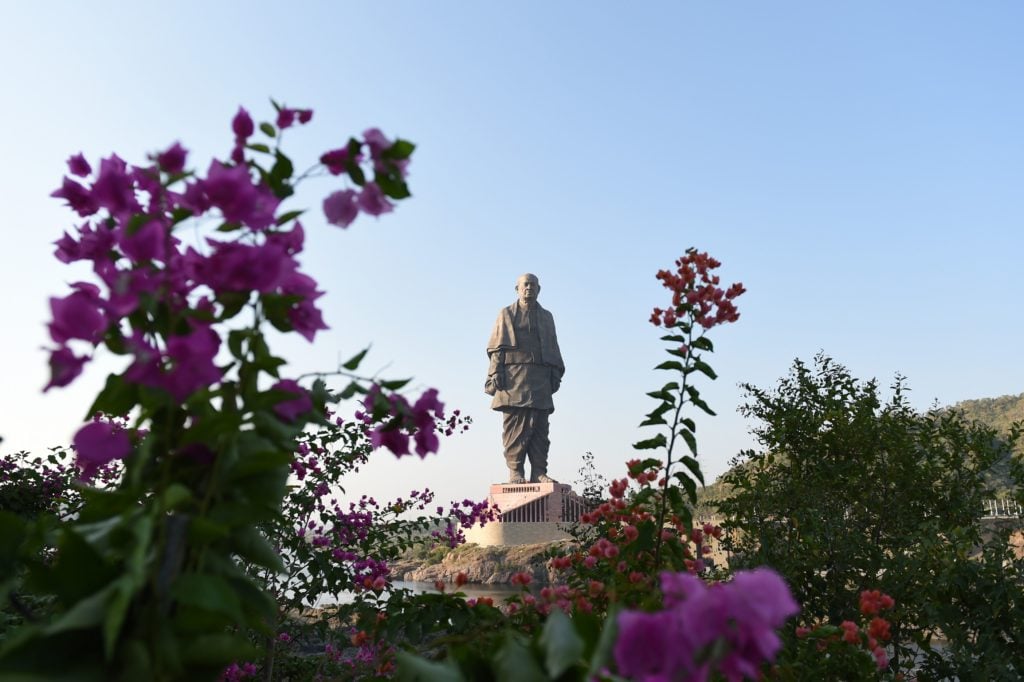
The Statue Of Unity, the world’s tallest statue, dedicated to Indian independence leader Sardar Vallabhbhai Patel. Photo by Sam Panthaky/AFP/Getty Images.
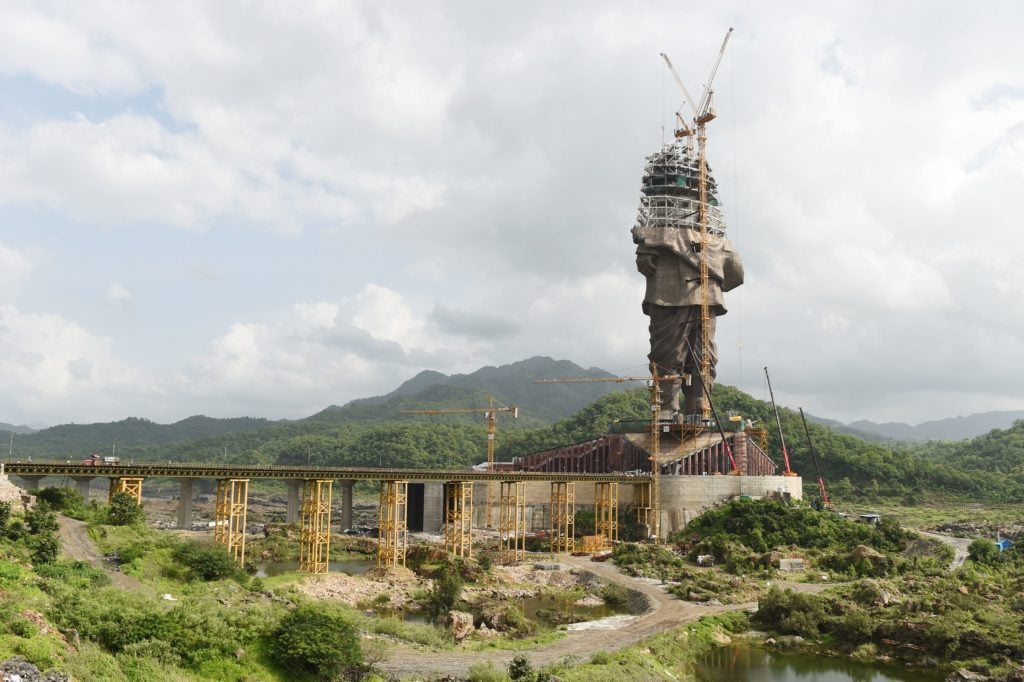
In this picture taken on August 25, 2018, Indian workers carry on construction works at the Statue Of Unity, a monument dedicated to Indian independence leader Vallabhbhai Patel. Photo by Sam Panthaky/AFP/Getty Images.
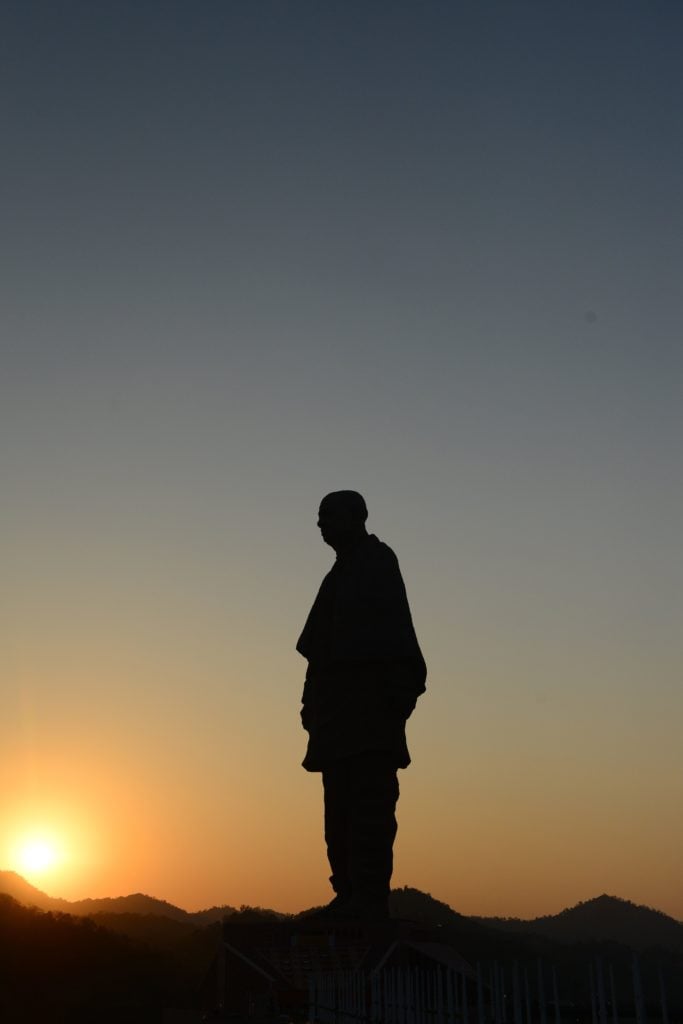
The Statue Of Unity, the world’s tallest statue, dedicated to Indian independence leader Sardar Vallabhbhai Patel. Photo by Sam Panthaky/AFP/Getty Images.
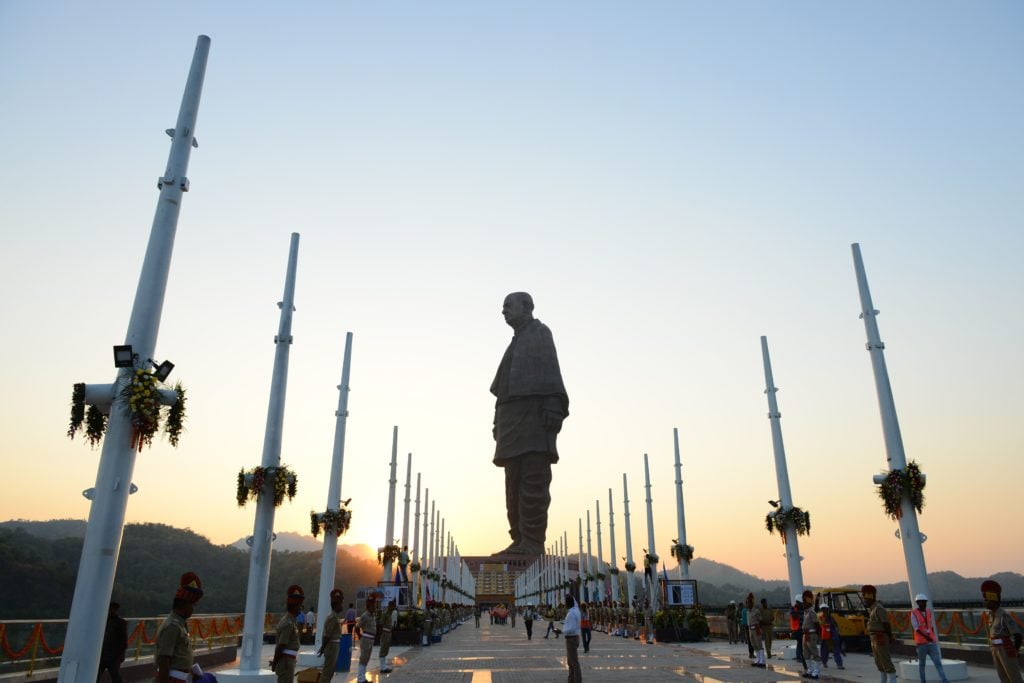
The Statue Of Unity, the world’s tallest statue, dedicated to Indian independence leader Sardar Vallabhbhai Patel. Photo by Sam Panthaky/AFP/Getty Images.
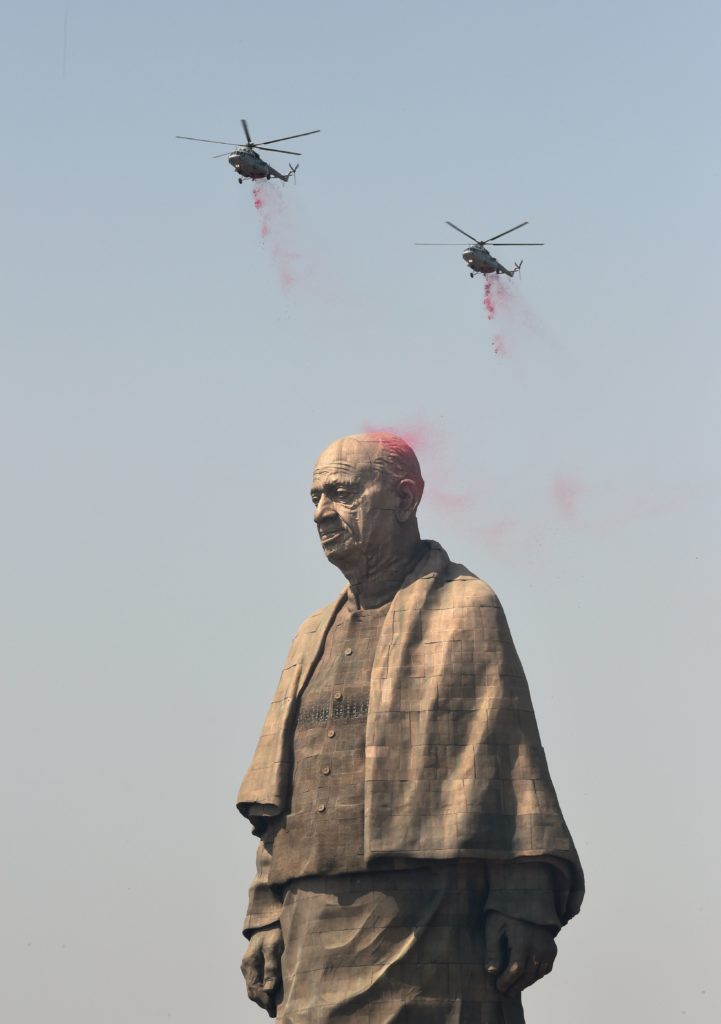
Indian Air Force helicopters shower rose petals on the Statue Of Unity, the world’s tallest statue, dedicated to Indian independence leader Sardar Vallabhbhai Patel. Photo by Sam Panthaky/AFP/Getty Images.